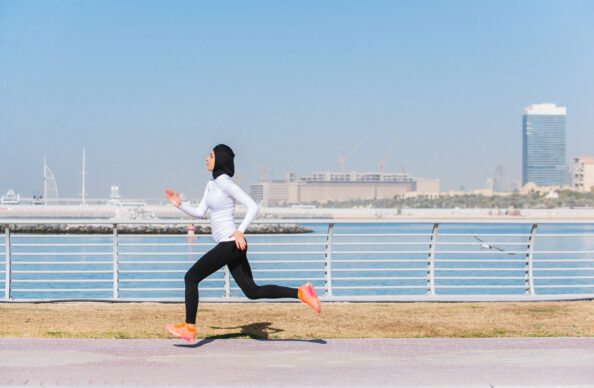by Devin Blessing, PT, DPT, OCS

Runner’s knee, also known as patellafemoral pain syndrome, is the most common running-related injury. It’s a term used to describe pain occurring around the knee cap while running and affects as high as 30% of adult runners and 45% of adolescent runners. Strengthening your glutes is a very common treatment method, but there are many more factors to account for to help address this common injury.
Can You Avoid Runner’s Knee?
- Too much too soon. The most common cause of any running injury is adding too much volume too quickly. Runner’s knee is inherently an overuse injury. The best way to avoid overuse injuries is to gradually increase exposure to the activity. In this case… running.
- Running too fast too often. Another common cause of runner’s knee is running too fast too often. The faster you run, the higher the forces at the knee. When adding speedwork in, you need to do so in small doses in order to let your body adapt.
- Adding hills. Running up and down hills is a great way to build strength, but do so with caution. Running downhill in particular has very high loads on the knee joint. When adding hills to your training plan, start small and build over time.
- Low running cadence. Many runners that suffer from runner’s knee adopt a lower cadence (step rate). For most runners, your cadence should be in the 170 to 180 steps per minute range when doing easy aerobic runs. When you start to dip into the 150s and 160s, you are significantly increasing the forces at your knee. Research shows that increasing your cadence by just 5% reduces the forces at your knee by 20%.
Aside from addressing the above factors, adding a strength training routine that includes the major muscle groups involved in running will be beneficial. This should include strengthening exercises for your glutes, hamstrings, quads, and calves. If you are suffering from runner’s knee, it’s beneficial to start with glute and hamstring exercises since they will put low loads on the knee. As the knee becomes less irritable, you can expose it to more quad strengthening that includes higher forces at the knee. Other modalities such as manual therapy and various taping methods may be beneficial when the knee is in an irritable state.
Rehabbing Runner’s Knee with Physical Therapy
If you are suffering from runner’s knee and need help getting back into running, schedule an appointment with one of our running specialist physical therapists.




